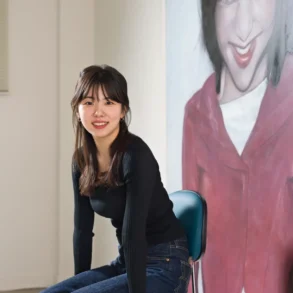
The Swiss artist turns cardboard and tape to the problems of social media, artificial intelligence and digital warfare.
Gladstone Gallery looks like a war zone, the aftermath of a Call of Duty gaming session gone bad, the virtual gunmen downing Red Bull and chain smoking over their keyboards, until a bomb came through the roof.
This is the tragicomic scene summoned in cardboard and packing tape by Thomas Hirschhorn, 66, a Swiss artist known since the 90s for wrestling humble materials into cacophonous installations: rows of PCs and desks, a ceiling festooned with smiley-face and purple devil emojis dangling from ropes of tape, and life-size cutouts of geared-up video game soldiers. Energy drink cans made of tinfoil and mounds of cigarettes fashioned from plastic foam litter the paper desktops. The cardboard monitors, many of them spiderwebbed with cuts, sport color printouts of screenshots from first-person shooters and photos of unnamed but real war-torn cities.
The installation, “Fake It, Fake It — Till You Fake It,” features plenty of charming, even funny details, like a box of plastic foam pizza slices or a couple of “I Heart NY” mugs. But the overall work is grim and aggressive. Hirschhorn warns of the weaponization of artificial intelligence and social media, represented by virtual forms of war — news feeds and games alike.
He hopes that his ramshackle, crazed aesthetic will prove his sincerity and urgency, like the cardboard signs of the panhandler or proselytizer. It’s uncomfortable, and it’s hard to look away.
But the madcap scenario Hirschhorn conjures isn’t nearly as scary or weird as reality. The installation is forceful but quaint, like protest art from a simpler time.
This post was originally published on this site be sure to check out more of their content







